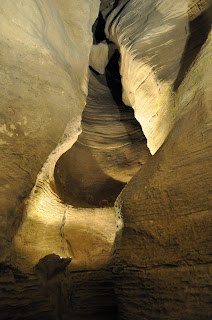 |
| North Camps Rangeley, Maine |
Typically at the end of August, the flow of arriving tourists to Maine begins to slow. One reason is that school starts a bit earlier now. When I was younger, school always started the day after Labor Day, but now kids are back at their desks at the end of August, making summer vacation just a little shorter.
 |
| 3-Bedroom cottage at North Camps |
Our last hoorah for the summer was a trip to North Camps in Rangeley, Maine. My family was joined by my in-laws. We rented a three-bedroom camp right on the north shore of beautiful Rangeley Lake. As summer in Maine goes, the temperatures were cooler, but with cooler temperatures, came less haze and bluer skies.
 |
| Farmers market in the old Phillips train station |
Along the road to Rangeley, we made a detour into the town of Phillips for the farmer's market figuring we could get some fresh lettuce for dinner. Instead, we left the farmers market with homemade fudge, maple syrup, and homemade root beer - admittedly, the fudge didn't make it up the road too far.
North Camps is made up of 12 cabins spread across 20 waterfront acres. There's a playground area for kids, a tennis court, horseshoe pits, 3 docks and countless Adirondack chairs waiting for occupants to have a seat and enjoy the lake and mountain views.
 |
| The living room in the cottage. |
Our cottage had three bedrooms, a large living room/kitchen, bathroom, small porch on one side and a screened porch on the other. This particular cottage was attached to the main lodge which housed the camp's office. Upon check-in we discovered that we were staying in the only cottage that didn't have well water, something we were unaware of when we booked. In this one cottage, the water was fed from the lake, so the camp owners had to provide us with drinking water. Originally they brought us a couple gallons, but it wasn't long before the five of us needed to ask for more, which for some reason seemed to surprise the owners. It was a bit of an inconvenience, but it worked out.
Since it was late in the season, we were the only people staying there, aside from the family that runs the place, so we pretty much had the place to ourselves. So much so, that the owners kept leaving periodically for an hour or two informing us that they'd be gone for awhile. This was a little frustrating because if we wanted to use the tennis courts, horseshoe pits or ping-pong table, we had to borrow the rackets, balls, or shoes from them. If they weren't there, we were out of luck until they returned.
I know what you're thinking...tennis court, ping-pong, docks. It sounds like a really nice resort. Well, it was nice in a rustic cottage sort of way, which is fine by us. We're not that picky when it comes to amenities. But let me tell you a little about these amenities.
 |
| The tennis court next to our cottage was a bit underutilized. |
 |
| Proper footwear recommended. |
Next to the tennis court was a playground for little kids. It would have been interesting for toddlers and young children, but it was much too small for my 10-year-old. It consisted of a couple of Little Tykes climbing toys and an old swingset.
The highlight of the amenities was the ping-pong table, although table was perhaps a bit of an exaggeration. It really was a 4x8 piece of plywood on four tree limbs that were about 4-inches in diameter. It was extremely weathered since I believe it it sat outside in front of our cabin permanently, no matter what the season. As a result, the table top was warped and cracked making the ball do all kinds of interesting bounces.
 |
| Home of the World Outdoor Rustic Plywood Ping Pong Championship |
Despite the condition of the table, we invented a new game. The World Outdoor Rustic Plywood Ping Pong Championship, The object was to keep the ball in play as long as possible. You would get a point it the ball hit the other person's side of the table and then hit the ground. However, the ball could bounce as many times as needed on one side of the table. We had a really good time playing this game.
 |
| A cottage next to the "beach". |
Since the water temperature was not conducive to wading in and slowly getting used to the water, swimming consisted of, jumping off the dock into the chilly water and getting out almost immediately to dry off. I'm sure in mid-summer on an 80 or 90 degree day, it is fine.
All in all, we had a nice time. The camps are rustic and yes, they could use a little infusion of cash to improve the facilities a bit, but it worked for us. Despite the commentary above, we would consider staying there again, but in one of the other cottages.
It is a relaxing place to visit and the Rangeley area is beautiful. Below are a few photos I took around the property.
 |
| Steve and Ashton at Smalls Falls near Rangeley |
 |
| Path to additional cottages. |
 |
| Pretty flowers in an interesting flower pot. |
 |
| Ashton on the bench swing. |
 |
| View of the swim area. |







































